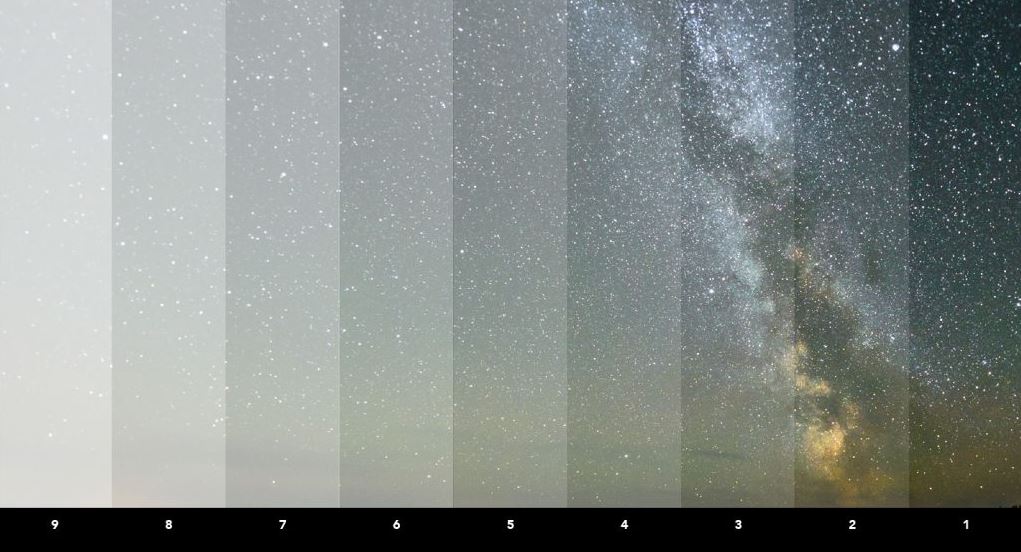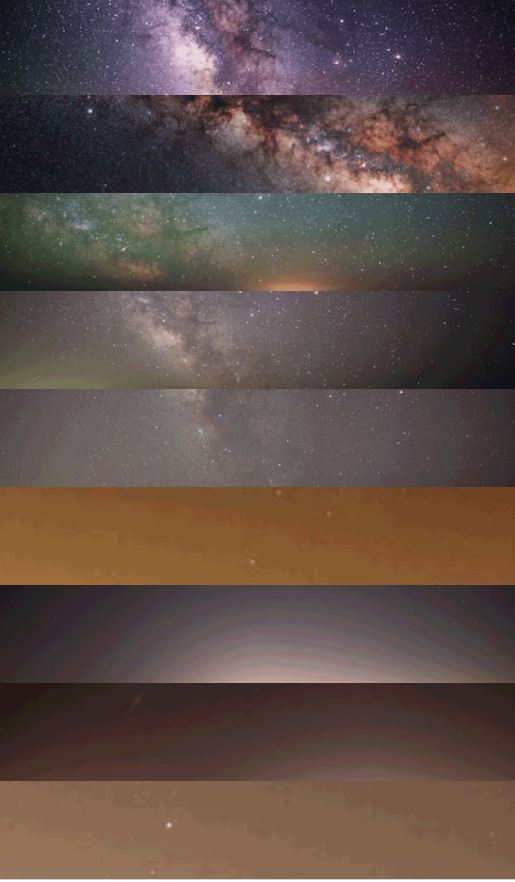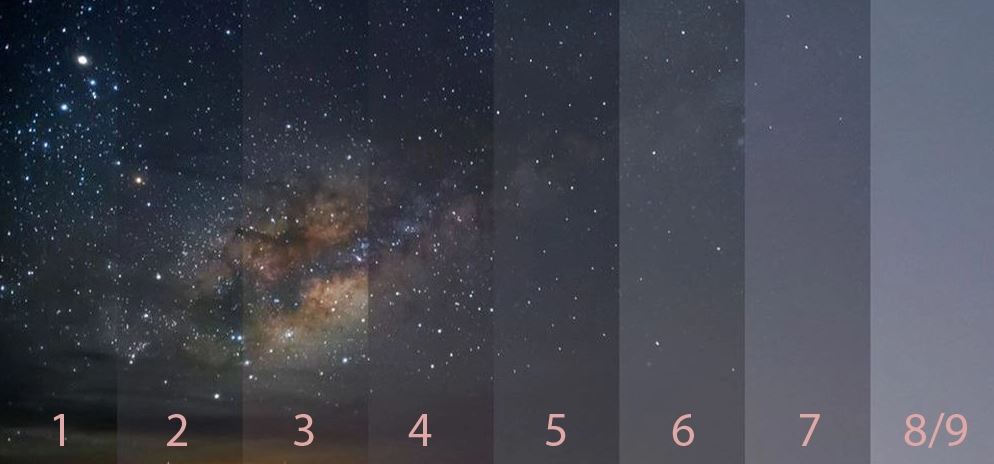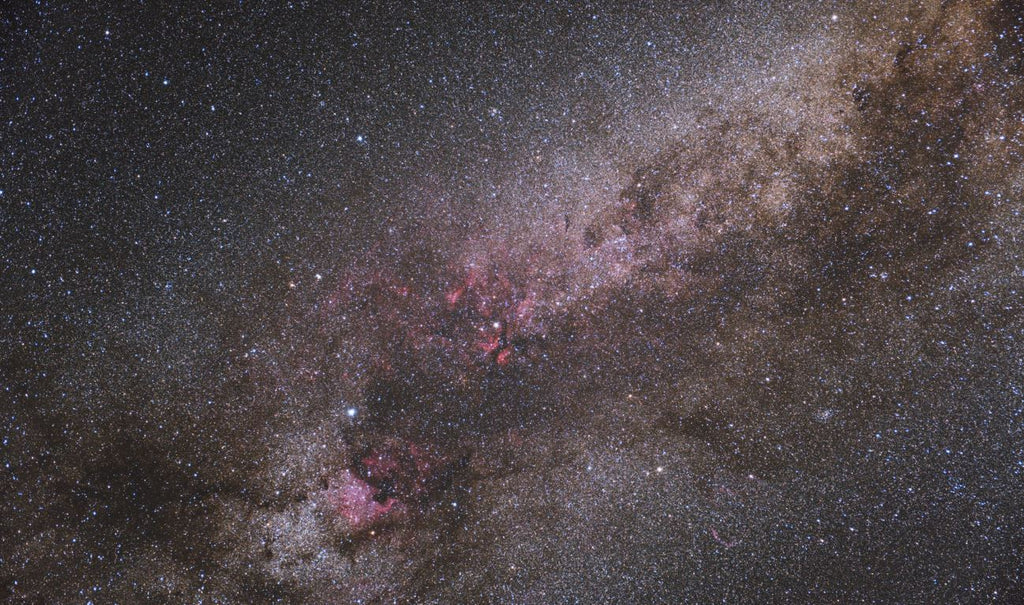Dark Sky Bortle Scale: The Light Pollution Scale
The Bortle Scale is a tool used by astronomers and stargazers to measure the level of light pollution in a given area. It was created by John Bortle in 2001 as a way to standardize the measurement of light pollution and its effects on astronomy. In this blog post, we will explore the Bortle Scale, how it works, and its significance for stargazers and astronomers.

Bortle Meaning
The term "Bortle" refers to the Bortle Scale, which is a nine-level numerical scale used to assess the darkness and visibility of the night sky at a particular location. It was created by John E. Bortle, an amateur astronomer, and is widely used by astronomers, stargazers, and sky enthusiasts.
The Bortle Scale ranges from Class 1, representing exceptionally dark skies with minimal light pollution, to Class 9, indicating heavily light-polluted skies where only the moon, planets, and brightest stars are visible. Each class on the scale describes the observable features of the night sky, such as the visibility of faint stars, the Milky Way, nebulae, and other celestial objects.
The Bortle Scale takes various factors into account, including the presence of artificial lighting, skyglow, visibility of celestial objects, and the overall darkness of the sky. It serves as a useful tool for evaluating and comparing different observing locations and helping individuals find optimal places for stargazing or conducting astronomical observations.
The Bortle Scale has become an important tool for astronomers and stargazers who need to find dark skies to observe celestial objects such as stars, planets, and galaxies. By using the Bortle Scale, they can determine the best locations for stargazing and astrophotography and avoid areas with excessive light pollution.

The Nine Classes of the Bortle Scale
Here are the nine classes of the Bortle Scale and their corresponding descriptions:
Class 1: Excellent dark-sky site
- Perfectly dark sky, free of light pollution
- Only the brightest stars visible to the naked eye
- Faint objects such as nebulae and galaxies visible with ease
Class 2: Typical dark-sky site
- Milky Way visible with ease
- Only minor light pollution visible on the horizon
- Excellent views of faint objects such as nebulae and galaxies
Class 3: Rural sky
- Some light pollution visible on the horizon
- Milky Way still visible, but fainter than in Class 2
- Faint objects such as nebulae and galaxies still visible, but require some effort
Class 4: Suburban sky
- Moderate light pollution visible on the horizon
- Milky Way barely visible, if at all
- Faint objects such as nebulae and galaxies difficult to see
Class 5: Inner-city sky
- High levels of light pollution visible in all directions
- Only the brightest stars visible to the naked eye
- No faint objects visible
Class 6: Bright suburban sky
- Very high levels of light pollution visible in all directions
- Only the brightest stars visible to the naked eye
- No faint objects visible
Class 7: Suburban/urban transition
- Extremely high levels of light pollution visible in all directions
- No stars visible except for the brightest few
- No faint objects visible
Class 8: City sky
- Severe light pollution visible in all directions
- No stars visible except for a few of the brightest
- No faint objects visible
Class 9: Inner-city sky
- Extreme light pollution visible in all directions
- No stars visible
- No objects visible other than the moon and a few of the brightest planets
How the Bortle Scale Works
The Bortle Scale is based on observations of the night sky from a specific location. To determine the class of a particular location, an observer needs to assess the visibility of various celestial objects, such as stars and planets, as well as the brightness of the sky and the presence of light sources.
The Bortle Scale is a nine-level numeric scale that measures the brightness of the night sky in a particular location. It was created by John Bortle in 2001 to provide a standard measure of sky darkness that could be used by astronomers, amateur astronomers, and stargazers alike. The scale ranges from Class 1, which represents the darkest skies with little to no light pollution, to Class 9, which represents the brightest skies with significant light pollution.
Understanding the Bortle Scale is important for anyone interested in stargazing, astrophotography, or astronomy. Knowing the level of light pollution in your area can help you determine what types of objects you will be able to see in the night sky and how bright they will appear. It can also help you plan observing sessions and choose the best locations for observing.

Below is a detailed breakdown of the Bortle Scale, including each class, its description, and what can be seen at each level.
The Bortle Scale
| Class | Description | Observing Conditions |
|---|---|---|
| 1 | Excellent dark-sky site | Excellent seeing, ideal for observing faint deep-sky objects, galaxies, and nebulae. |
| 2 | Rural or remote site | Very good seeing, fainter deep-sky objects are visible, but some light pollution may still be present on the horizon. |
| 3 | Rural sky | Good seeing, most Messier objects are visible, but light pollution is still a factor. |
| 4 | Suburban transition | Moderate seeing, Milky Way is still visible, but light pollution is a significant factor. |
| 5 | Suburban sky | Poor seeing, the Milky Way is barely visible, and only the brightest Messier objects are visible. |
| 6 | Bright suburban sky | Very poor seeing, only the brightest stars are visible, and the sky appears washed out. |
| 7 | Suburban/urban transition | Extremely poor seeing, only the Moon, planets, and a few bright stars are visible. |
| 8 | City sky | Virtually no seeing, only the Moon and a few planets are visible, and the sky appears yellow or orange. |
| 9 | Inner-city sky | No seeing, only the Moon and a few planets are visible, and the sky appears red or yellow. |
The Bortle Scale is a valuable tool for anyone interested in stargazing, as it provides a standard measure of sky brightness that can be used to plan observing sessions, select observing sites, and gauge the quality of the night sky in different locations. Whether you are an amateur astronomer, a professional astronomer, or simply someone who enjoys looking at the stars, understanding the Bortle Scale can help you get the most out of your observing experiences.
How to Use the Bortle Scale
To use the Bortle Scale, you will need to find out the rating for your location. You can do this by using online tools such as lightpollutionmap or darksitefinder, which provide detailed maps of light pollution levels around the world.
Once you have found the Bortle Scale rating for your location, you can use it to plan your observing session. If you are new to stargazing, it is best to start with a location that has a low Bortle Scale rating, such as a state park or nature reserve that is far away from city lights. This will give you the best chance of seeing faint objects in the night sky and will provide a more enjoyable observing experience.
If you are planning to observe from a backyard or other location with high light pollution, there are still steps you can take to improve your observing conditions. For example, you can try using light pollution filters on your telescope or camera to block out unwanted light. You can also try observing during moonless nights or when the Moon is low on the horizon, as this will help reduce the amount of light pollution in the sky.
Remember that the Bortle Scale is not a perfect measure of sky brightness, and light pollution levels can vary greatly depending on local conditions. It is also important to consider other factors that can affect observing conditions, such as weather patterns, humidity, and atmospheric conditions.

Bortle Scale NELM and SQM
Here is a table that compares the Bortle Scale with the NELM (Naked Eye Limiting Magnitude) and SQM (Sky Quality Meter) readings for each level:
| Bortle Scale | Description | NELM | SQM |
|---|---|---|---|
| 1 | Excellent dark-sky site | 7.6 to 8.0 | 21.8 - 22.0+ mag/arcsec² |
| 2 | Typical truly dark site | 7.0 to 7.5 | 21.2 - 21.7 mag/arcsec² |
| 3 | Rural sky | 6.5 to 6.9 | 20.8 - 21.1 mag/arcsec² |
| 4 | Suburban sky | 6.0 to 6.4 | 20.0 - 20.7 mag/arcsec² |
| 5 | Inner-city sky | 5.0 to 5.9 | 19.0 - 19.9 mag/arcsec² |
| 6 | Bright suburban sky | 4.5 to 4.9 | 18.0 - 18.9 mag/arcsec² |
| 7 | Suburban/urban transition | 4.0 to 4.4 | 17.0 - 17.9 mag/arcsec² |
| 8 | City sky | 3.5 to 3.9 | 16.0 - 16.9 mag/arcsec² |
| 9 | Inner-city sky, brightest stars visible only | Less than 3.5 | Less than 15.0 mag/arcsec² |
Note that the NELM and SQM values given are approximate and can vary depending on factors such as observer's age and visual acuity, atmospheric conditions, and light pollution sources in the area. SQM readings may also vary depending on the model of the meter used.

Bortle: The Dark Sky Scale
When planning a stargazing session, it is important to consider the Bortle Scale rating for your location. Ideally, you would want to choose a location with a low Bortle Scale rating, meaning that the sky is relatively dark and free of light pollution. This will provide the best viewing conditions for observing faint objects in the night sky.
If you live in an area with high light pollution and cannot travel to a darker location, there are still some steps you can take to improve your observing conditions. For example, you can try using light pollution filters on your telescope or camera, which can help block out some of the unwanted light and improve the contrast of your images. You can also try observing during moonless nights or when the Moon is low on the horizon, as this will also help reduce the amount of light pollution in the sky.

Another important factor to consider when using the Bortle Scale is that it is not a perfect measure of sky brightness. Light pollution can vary greatly depending on local conditions, weather patterns, and time of day. Additionally, the Bortle Scale only measures the brightness of the sky and does not take into account other factors that can affect observing conditions, such as humidity, temperature, and atmospheric conditions.
Despite its limitations, the Bortle Scale remains a useful tool for anyone interested in stargazing or astrophotography. By using the scale to gauge the level of light pollution in your area, you can better plan your observing sessions and choose the best observing locations for your needs. With a little bit of planning and preparation, anyone can enjoy the wonders of the night sky, regardless of their location or level of experience.
More Astrophotography Topics:
- How to find the North Star?
- Astrophotography Equipment for Beginners
- Astrophotography for Beginners
- Best Camera for Astrophotography
- Best Telescope for Astrophotography
- Best Beginner Astrophotography Targets
- Best Image Stacking Software for Astrophotography
- Best Narrowband Astrophotography Targets
- Astrophotography Targets by Month
- Good Widefield Astrophotography Targets

